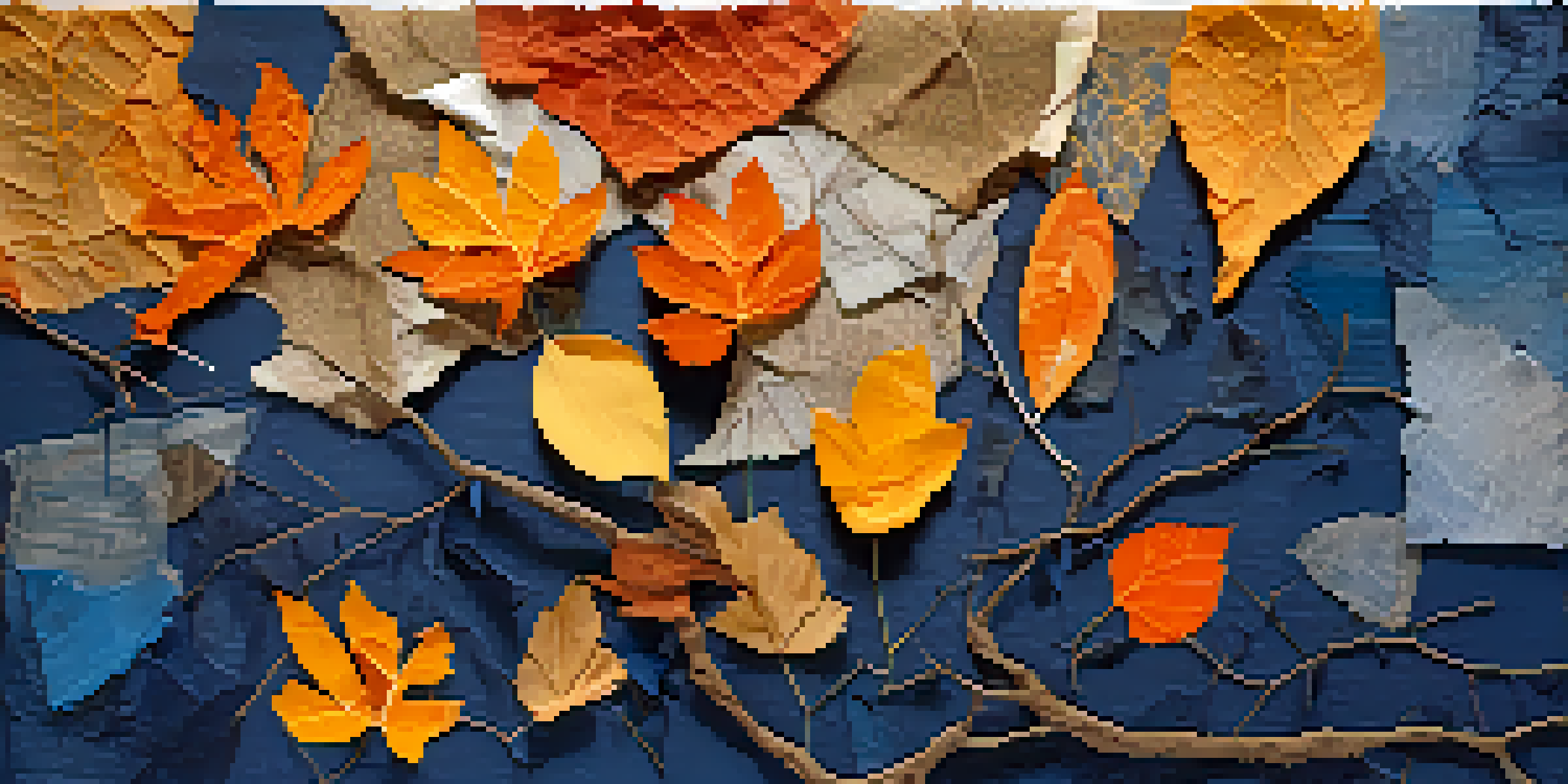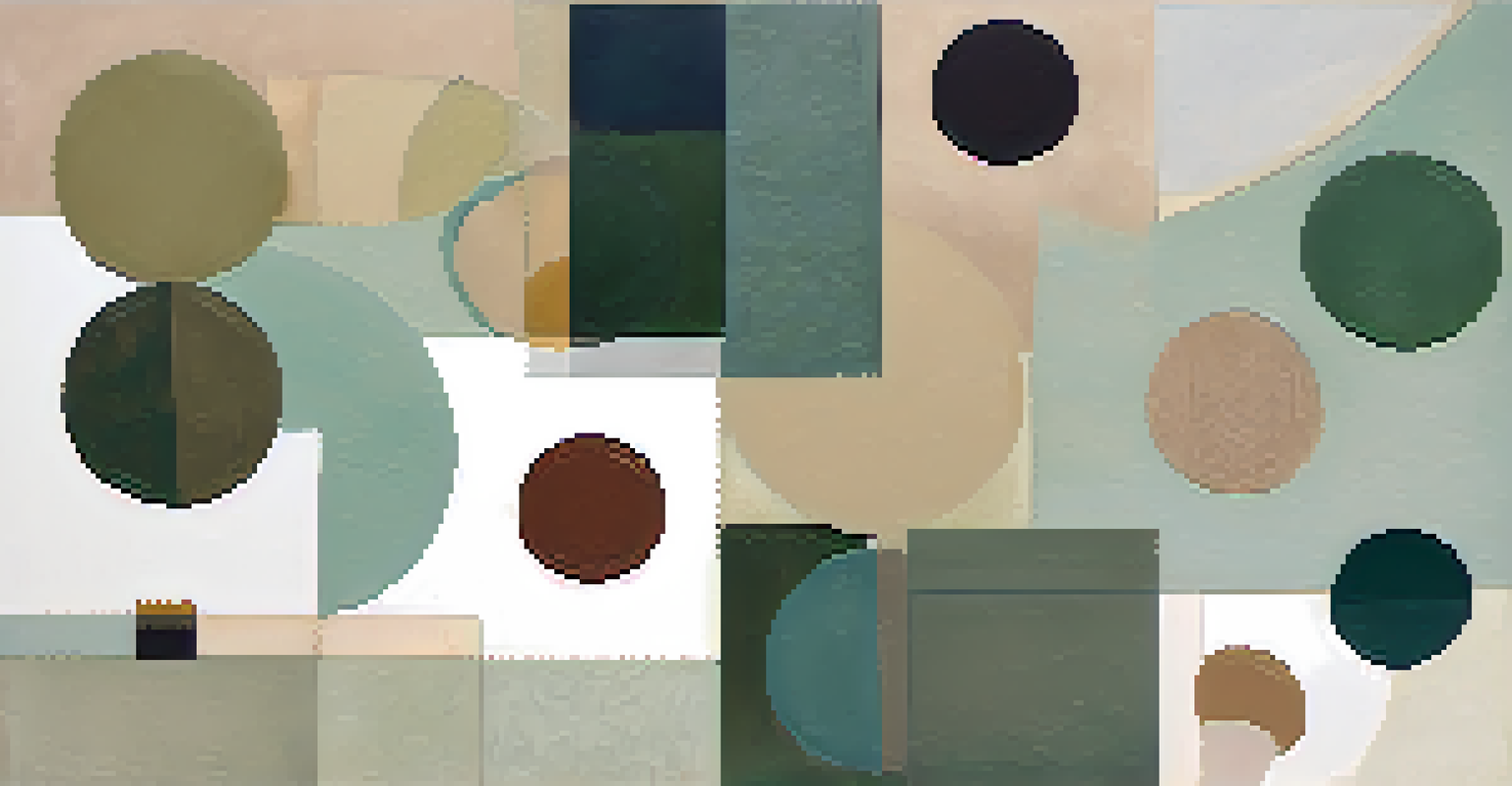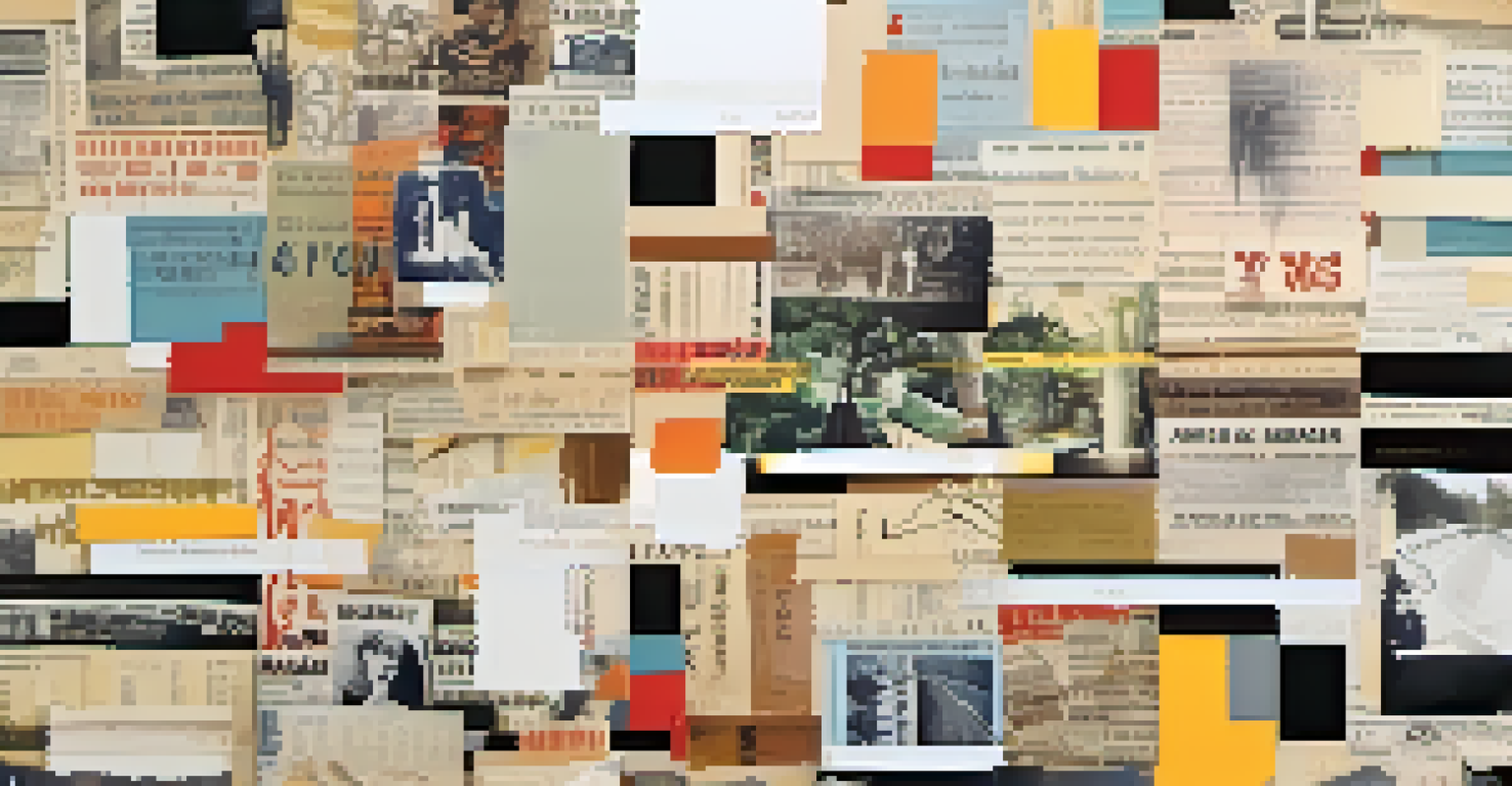Techniques for Layering in Collage Painting: A Step-by-Step Guide

Understanding the Basics of Collage Painting
Collage painting is an art form that combines different materials to create a cohesive piece. It often includes paper, fabric, and even found objects, making it a versatile medium for expression. Understanding the basics is crucial, as it sets the foundation for more advanced layering techniques. Think of it like building a sandwich, where each layer adds flavor and texture to the final bite.
Creativity takes courage.
Before diving into layering, familiarize yourself with the tools of the trade. Scissors, glue, and a variety of papers are essential, but don't forget about the importance of a good workspace. A clean, organized area can spark creativity and keep distractions at bay. Just as a chef needs a tidy kitchen, an artist thrives in a clutter-free environment.
Finally, get inspired! Look at famous collage artists or even your own surroundings for ideas. Inspiration can come from anywhere; a colorful magazine, a unique fabric, or nature itself. Remember, every great artwork starts with a single spark of creativity.
Choosing Your Materials Wisely
The materials you choose can dramatically impact the look and feel of your collage painting. Consider using various textures, colors, and patterns to create depth. For instance, mixing smooth papers with rough fabrics can provide an eye-catching contrast. Just like in fashion, mixing textures can elevate your artwork to new heights.

Additionally, think about the weight of your materials. Heavier items may require stronger adhesives or a sturdier canvas. Using lightweight materials can create a more delicate appearance, while heavier items can add a sense of stability and strength. It's all about balance and how different materials work together.
Collage Painting Basics
Understanding the foundational elements of collage painting, such as materials and workspace, enhances creativity and expression.
Lastly, don't shy away from experimenting with unconventional materials. Items like recycled cardboard, old photographs, or even natural elements like leaves can add unique flair to your collage. The key is to have fun and let your creativity flow, allowing your materials to guide your artistic direction.
Planning Your Composition Before Layering
Before you start layering, take a moment to plan your composition. A rough sketch can help you visualize how different elements will fit together. Think of this sketch as a roadmap for your journey; it keeps you on track and prevents you from getting lost in the process. A well-thought-out composition can make the layering process more efficient and enjoyable.
Every artist was first an amateur.
Consider the focal point of your piece. This is where you want the viewer's eye to be drawn first. By strategically placing your elements around this focal point, you can create a sense of harmony and balance. Just like arranging furniture in a room, the layout of your collage matters greatly.
Finally, think about the visual flow within your artwork. How do your layers interact with each other? Do they create movement or lead the viewer's eye in a specific direction? Paying attention to these details can elevate your collage from ordinary to extraordinary.
Layering Techniques: Building from the Background
Start your layering process with a strong background. This foundational layer sets the tone for your entire collage painting. You might choose to use a solid color, a textured surface, or even a patterned paper as your base. Just like a canvas for a traditional painting, this layer is your starting point.
Once your background is established, begin adding layers gradually. Start with larger pieces and work your way down to smaller details. This approach allows you to build depth and complexity without overwhelming your composition. Think of it like planting a garden; you start with the larger plants and fill in the gaps with smaller ones.
Layering Techniques
Effective layering, starting with a strong background and building depth gradually, is key to creating a visually appealing collage.
Don't be afraid to experiment! Layering is all about exploration and finding what works best for your artistic vision. Try different arrangements and see how they change the overall feel of your piece. Remember, art is a journey, and each layer brings you closer to your destination.
Incorporating Texture: Adding Dimension to Your Art
Texture is a vital element in collage painting that adds visual interest and dimension. Incorporating various materials like fabric, sandpaper, or even natural elements can enhance the tactile quality of your artwork. Imagine running your fingers over a collage; the different textures can evoke different feelings and reactions.
To create a sense of depth, consider layering materials with contrasting textures. For example, combining smooth paper with rough burlap can create a dynamic interaction. Just like in music, where different instruments harmonize, textures can work together to produce a rich visual experience.
Additionally, think about how you can manipulate texture through techniques like tearing or crumpling your materials. These actions can create unique shapes and shadows that contribute to the overall design. Embracing imperfection can lead to unexpected beauty in your artwork.
Using Color to Enhance Your Collage Layers
Color plays a crucial role in collage painting, influencing the mood and message of your artwork. When layering, think about how colors interact and complement each other. A bright red paper can energize a piece, while soft blues may evoke calmness. Just like in a well-composed photograph, colors can create a story.
Consider using a color wheel as a guide for your layering process. Complementary colors can create striking contrasts, while analogous colors can provide a more harmonious feel. This knowledge helps you make informed choices about which colors to incorporate at each layer, enhancing the overall composition.
Final Touches Matter
Sealing and adding finishing details are essential steps that protect your artwork and enhance its overall impact.
Experiment with varying shades and tints as you layer, allowing your palette to evolve organically. You might discover that a muted shade of a primary color can add sophistication to your artwork. The beauty of collage painting lies in its flexibility; embrace the process and watch your color choices unfold.
Final Touches: Sealing and Finishing Your Collage
Once your layers are complete, it's time for the final touches. This includes sealing your collage to protect it and enhance its longevity. A clear acrylic medium can provide a glossy finish, while a matte sealant can offer a more subdued look. Think of this step as putting a protective cover on a treasured book; it keeps your artwork safe from wear and tear.
You might also want to add additional details after sealing, such as ink, paint, or embellishments. These elements can bring your collage to life and add that final spark of creativity. Just as a chef might add a garnish to a dish, these finishing touches can elevate your artwork.

Finally, take a moment to step back and admire your work. Reflect on the journey you've taken through layering, texture, and color. This is your creation, a unique expression of your artistic vision, and it's essential to appreciate the effort and passion that went into it.